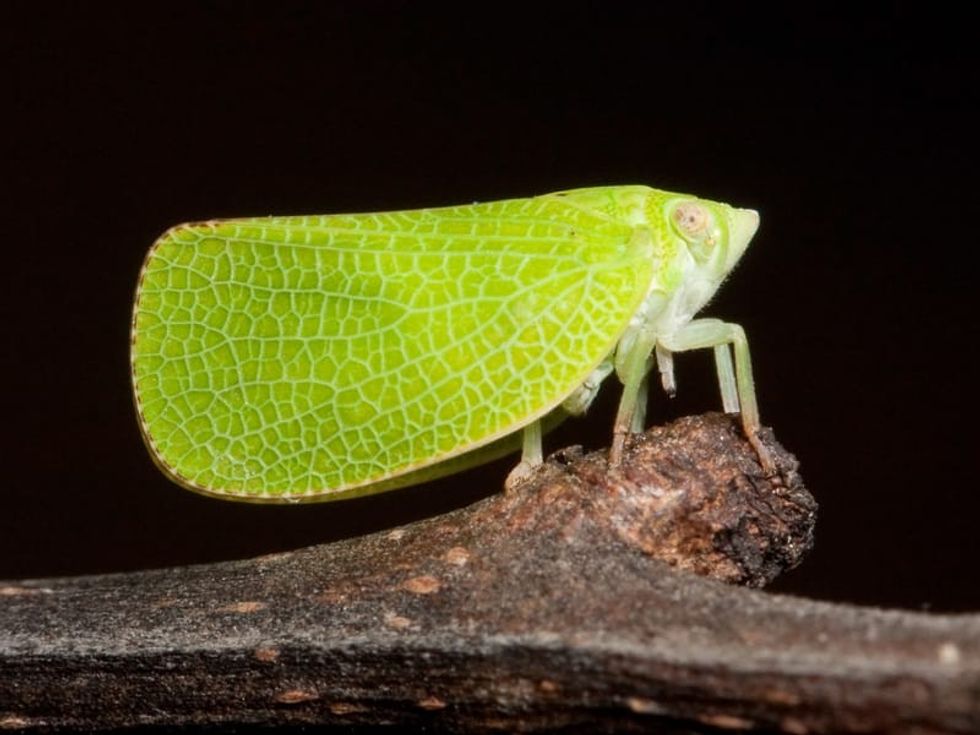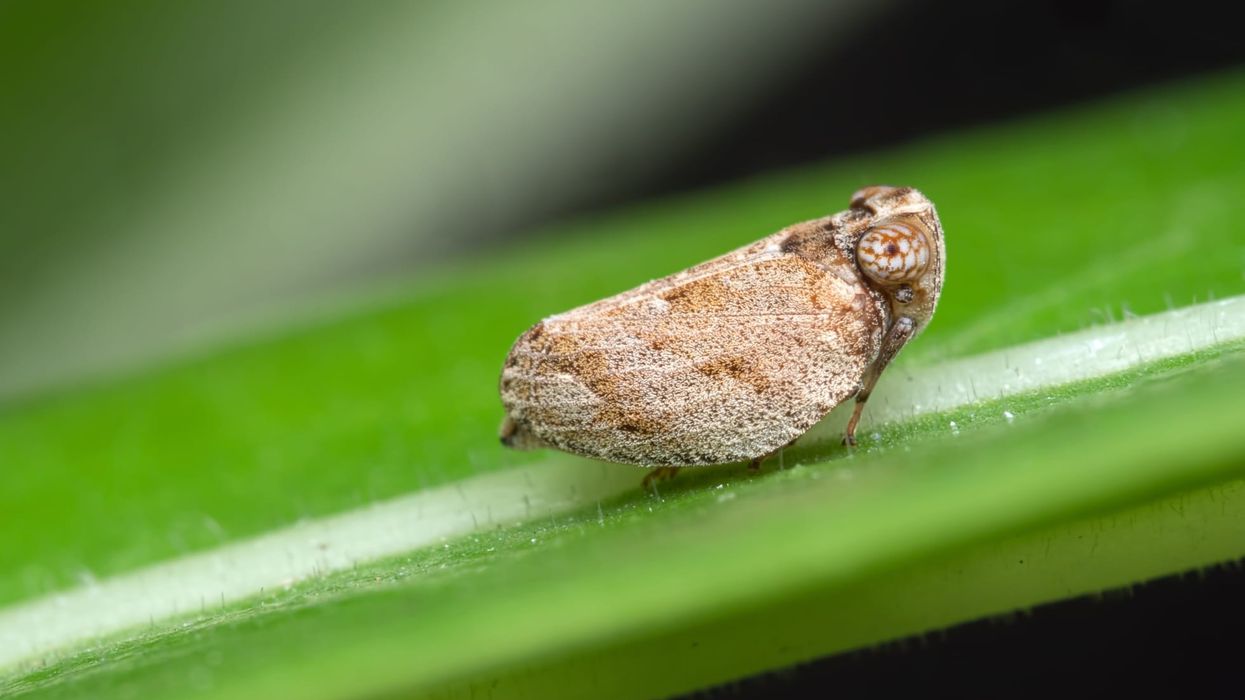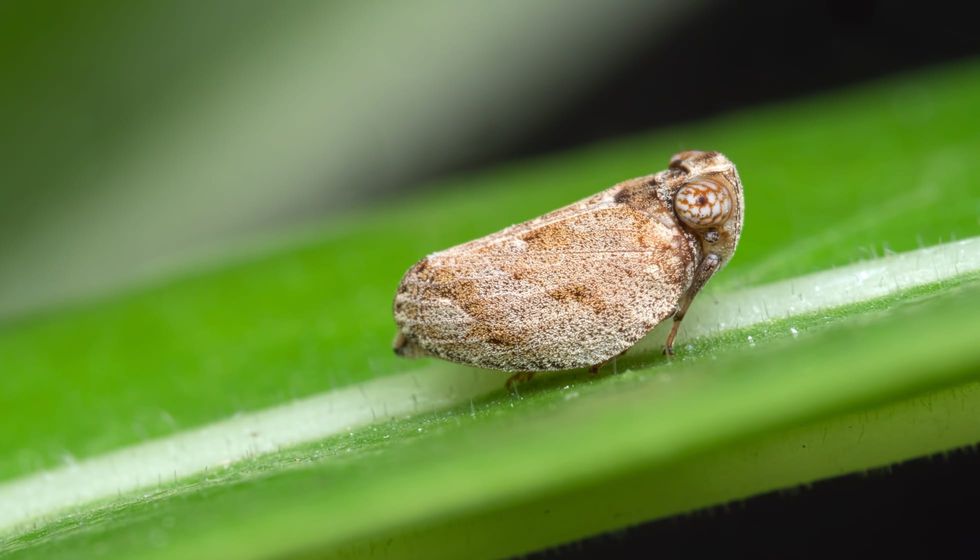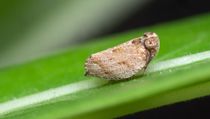Fun Planthopper Facts For Kids

Planthoppers (Citrus flatid) are insects belonging to the family of bugs known for sucking out sap from the xylem and phloem of plants, thereby also sucking out the life from plants. They also spread diseases among plants while they do so, and leave a dark white moss on them.
There are various species of planthoppers of the order Hemiptera, such as the green planthopper or the torpedo bug, citrus flatid planthopper or Metcalfa pruinosa, furry white planthopper, northern flatid planthopper, small brown planthopper, derbid planthopper, Surinam planthopper.
There are 20 families of leafhoppers of the order Hemiptera, and only the Delphacidae family have the virus-vector species. These different species have various features in terms of physical appearance and choice of food.
For example, brown planthoppers feed only on rice crops and are considered one of the worst pests for rice crops. Other planthoppers, however, feed on all sorts of trees and plants. They generally feed on the plant through its leaf.
They sit on the leaf and suck out the matter from the plant, and then jump off even at the slightest amount of disturbance. However, in the case of nymphs, they release waxy substances to protect themselves from any threat.
If you liked reading this, then you should also check out these harlequin bug facts and leaf-footed bug facts.
Planthopper Interesting Facts
What type of animal is a planthopper?
Planthopper is an insect of order Hemiptera, true bugs, or Hemiptera with about 1400 genera and over 12000 different species. Members of this group are known to be plant-feeders and live worldwide.
What class of animal does a planthopper belong to?
It is an insect in the infraorder Fulgoromorpha and superfamily Fulgoroidea in the order Hemiptera commonly found in North America. It belongs to the class Insecta and is not an arachnid.
How many planthoppers are there in the world?
There are countless planthoppers of the order Hemiptera in the world. They are found worldwide in large numbers and in almost every kind of habitat. Their populations are spread across every country, though ranging in larger numbers in cooler places than in tropical areas.
Where does a planthopper live?
Planthoppers of the order Hemiptera generally live in ornamental herbs, trees, and vines. Though they are in general spread across the world, some species are specific to certain areas.
For example, the citrus flatid planthopper is a planthopper insect that is native to North America. There are around 13 families of planthoppers native to North America, consisting of more than 3000 species most of which can be found in the North of Mexico. Even the flatid planthopper is commonly reported on shrubs in North Carolina.
What is a planthopper's habitat?
Planthoppers of the order Hemiptera are found on all continents in nearly every natural habitat that supports flora life, as well as deserts, grasslands, wetlands, and forests. They're sometimes found feeding on the ground stem or leaves of host plants.
However, in case of any threat, large swarms of planthoppers come together and form the shape of a flower to fool the eye of the predator, which is generally birds in the case of planthoppers.
Who do planthoppers live with?
Planthoppers of the order Hemiptera are not known to be very social creatures. Planthoppers and leafhoppers generally live on their own, feeding on the host's green leafy plants.
How long does a planthopper live?
These insects of the order Hemiptera do not have a very long lifespan. They can have three generations in one year, and at times even 12 generations of hoppers have been noticed in a year.
However, the duration of the planthopper life cycle varies from season to season. Between June to October, their life cycle is completed in 18-24 days. From November to January, it is completed in 38-44 days and 18-35 days in between February and April.
How do they reproduce?
Planthoppers (order: Hemiptera) have a very interesting way of attracting mates via transmission of vibrating calls, and adult planthoppers mate on the day of emergence itself. The females lay eggs on the day of mating.
The eggs hatch in about six to nine days, following which the nymphs undergo five nymphal stages, which together last for 16-18 days, and then they become adults. Adult planthoppers of order Hemiptera again mate on that very day itself.
What is their conservation status?
According to the IUCN, planthoppers have been put into the category of Least Concern. There are over 120,000 species of these insects found on the Earth and each one of them has been categorized differently by the IUCN.
Planthopper Fun Facts
What do planthoppers look like?
Planthoppers (Citrus flatid) have been named so because of their striking similarity to leaves and the fact that they hop to move, a fashion similar to that of a grasshopper.
Planthoppers have laterally flattened bodies, and they keep their long wings upright in a tent-like manner, hence concealing a portion of the thighs and the sides of their body. Many Fulgoroid nymphs develop wax from glands on the abdominal terga and elsewhere on the body.
Planthoppers can be of various colors depending on their species, such as purplish-blue, lime green, or powdery white.

How cute are they?
Planthoppers are not at all cute. They are pests that are so small and are not even visible and hence can cause mass destruction to crops.
How do they communicate?
Planthoppers, like the candy-striped leafhopper, use swift, rhythmic movements of their abdomen to transmit vibrational calls along plant stem and leaves to attract mates from afar. They use their snapping organ to send these vibrational calls.
The snapping organ is located dorsally on either side of the body, covering the first two abdominal segments at the intersection between the metathorax and the abdomen. Planthoppers also have a migrating tendency. Some species migrate towards the south in winter and return back north in the late spring.
How big is a planthopper?
Planthoppers are tiny creatures whose height range is 0.3-1.9 in (1 to 5 cm). They may be 0.18 in (0.48 cm) in length.
They are so tiny, like leafhoppers, that they seem like a flicker of dust in the woods. Some species like the Metcalfa pruinosa or the citrus flatid planthopper as small as 0.2-0.3 in (5.5-8 mm) in length.
How fast can a planthopper move?
Planthoppers can move very fast with their hop. Even at the slightest amount of disturbance, they can jump off a leaf blade they are feeding upon and disappear from one's eyesight.
How much does a planthopper weigh?
There is no such information about the weight of a planthopper because planthoppers are small in size, and they are barely visible.
What are their male and female names of the species?
There are no specific names as such for male and female planthoppers. However, the appearance of females may vary depending on the species.
What would you call a baby planthopper?
A baby planthopper (immature insect) is called a Fulgoroid nymph. Nymphs can produce a wax-like substance that serves mainly two purposes.
The first one is to safeguard the nymphs from predators and help them glide around plants when they fall. The waxy planthopper nymph moves the waxy threads into a smooth line as it prepares to hop.
It moves gently and slowly before taking a big leap, and once in the air, it will fan the threads out for an extra lift. A flatid planthopper nymph has a tail of waxy filaments.
Young planthoppers, from the planthopper larva stage, develop into adults with short stubby wings. However, some adults have short wings, due to which they cannot fly, but they are prolific breeders.
What do they eat?
A planthopper nymph, straight out of the egg, and an adult consume by sucking plant matter out of the phloem and xylem of a plant. The nymphs produce honeydew in doing so, which is where sooty mold grows and thrives.
Haplaxius crudus is one of the species that is considered a pest cause it is a vector for lethal yellowing that almost killed off the entire Jamaican tall coconut variety.
Planthoppers can spread plant disease when they feed on a plant and suck out the sap from the plants, which is why they can be a serious threat to crops at times.
These insects can transmit phytoplasma because they are vectors for plant diseases. The green planthopper diet is also very similar.
Are they dangerous?
They are not dangerous to humans specifically, but they can be very dangerous for the crops that they thrive on. Brown planthopper habitats, for example, are rice fields as a brown planthopper pest prefers feeding specifically on rice, and they can destroy huge rice fields by transmitting disease in the crops and sucking out sap from them.
Peregrinus maidis, known as the corn planthopper is also a very dangerous planthopper bug.
It is a vector for several viruses and hence is also known as the corn planthopper virus. Every year, planthoppers' outbreaks destroy hundreds of acres of rice crops which is the staple food of over half the world's population.
Would they make a good pet?
Planthoppers are pests with wings, and considering the amount of danger they pose for all kinds of plants, including household plants, they would not make good pets.
Did you know...
Planthoppers was mentioned in one of the scenes of an Alfred Hitchcock film called Marnie, released in 1964. There, they were mentioned as 'flatid bugs'.
Are you looking for the planthopper vs. leafhopper difference? Leafhoppers feed and lay their egg cells on the leaves and higher parts of the plants, whereas planthoppers feed and lay their egg cells towards the basal part of the plants. Planthoppers and leafhoppers are both considered pests worldwide.
The result of planthopper intraspecific competition is that the competition dampens the effects of optimal temperatures. At higher temperatures, these insects start causing greater damage.
Why are planthoppers called cryptic mimics?
Planthoppers are called so because their body shape, wings, and colors look like leaves and other parts in their environment. They easily blend in with their surroundings.
They mimic the appearance of plants in a very cryptic manner and hence their name, and they either walk very slowly or jump like a grasshopper with their wings. Leafhoppers are also called cryptic mimics.
What do planthoppers have at the base of their hind legs?
Planthoppers' nymphs have a biological gear mechanism at the base of the hind legs below their wings, which keeps the legs in synchrony when the insects jump.
Here at Kidadl, we have carefully created lots of interesting family-friendly animal facts for everyone to discover! For more relatable content, check out these cat-faced spider facts and Carolina wolf spider facts pages.
You can even occupy yourself at home by coloring in one of our free printable Planthopper coloring pages.
We Want Your Photos!
More for You
Bachelor of Commerce specializing in Accounting and Finance, Master of Business Administration

Divya RaghavBachelor of Commerce specializing in Accounting and Finance, Master of Business Administration
With a diverse range of experience in finance, administration, and operations, Divya is a diligent worker known for her attention to detail. Born and raised in Bangalore, she completed her Bachelor's in Commerce from Christ University and is now pursuing an MBA at Narsee Monjee Institute of Management Studies, Bangalore. Along with her professional pursuits, Divya has a passion for baking, dancing, and writing content. She is also an avid animal lover who dedicates her time to volunteering for animal welfare causes.
Bachelor of Commerce specializing in Marketing and HR

Pradhanya RaoBachelor of Commerce specializing in Marketing and HR
With a Bachelor’s degree in Commerce from Christ University, Bangalore, Pradhanya's passion for the English language and literature led her to explore the field of content writing, where she has gained extensive experience in writing, reviewing, editing, and fact-checking. She has also earned certifications in Google Ads Search, Google Ads Display, and Social Media Marketing, showcasing her proficiency in digital marketing.
Disclaimer
1) Kidadl is independent and to make our service free to you the reader we are supported by advertising. We hope you love our recommendations for products and services! What we suggest is selected independently by the Kidadl team. If you purchase using the Buy Now button we may earn a small commission. This does not influence our choices. Prices are correct and items are available at the time the article was published but we cannot guarantee that on the time of reading. Please note that Kidadl is a participant in the Amazon Services LLC Associates Program, an affiliate advertising program designed to provide a means for sites to earn advertising fees by advertising and linking to Amazon. We also link to other websites, but are not responsible for their content.
2) At Kidadl, we strive to recommend the very best activities and events. We will always aim to give you accurate information at the date of publication - however, information does change, so it’s important you do your own research, double-check and make the decision that is right for your family. We recognise that not all activities and ideas are appropriate for all children and families or in all circumstances. Our recommended activities are based on age but these are a guide. We recommend that these ideas are used as inspiration, that ideas are undertaken with appropriate adult supervision, and that each adult uses their own discretion and knowledge of their children to consider the safety and suitability. Kidadl cannot accept liability for the execution of these ideas, and parental supervision is advised at all times, as safety is paramount. Anyone using the information provided by Kidadl does so at their own risk and we can not accept liability if things go wrong.
3) Because we are an educational resource, we have quotes and facts about a range of historical and modern figures. We do not endorse the actions of or rhetoric of all the people included in these collections, but we think they are important for growing minds to learn about under the guidance of parents or guardians.







